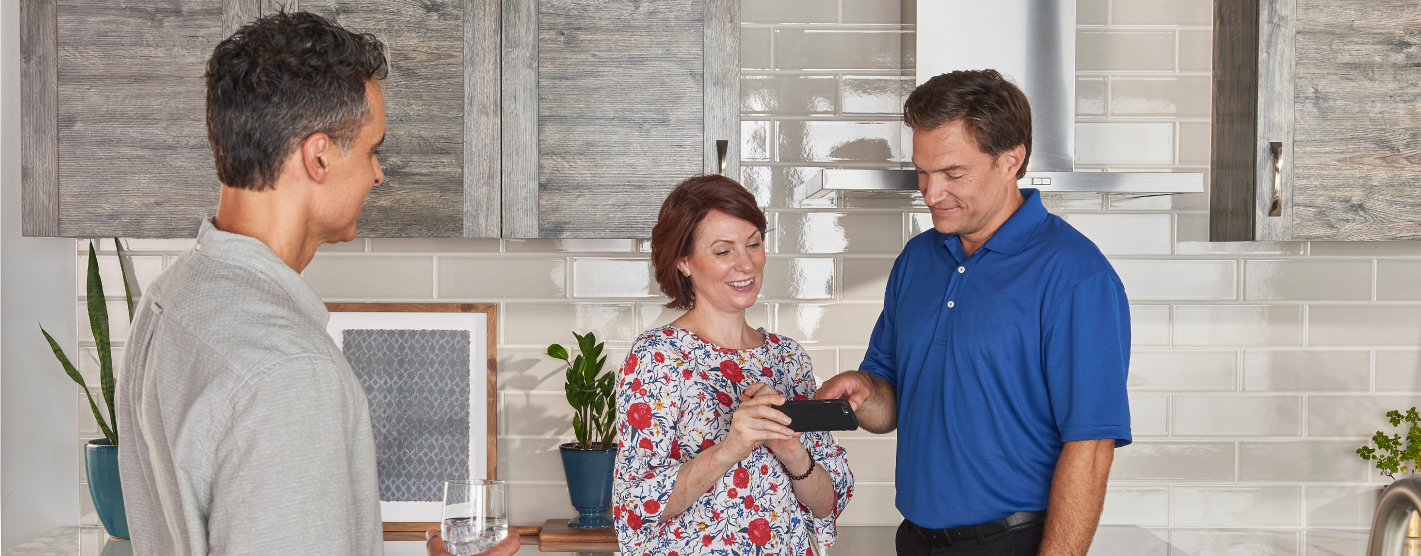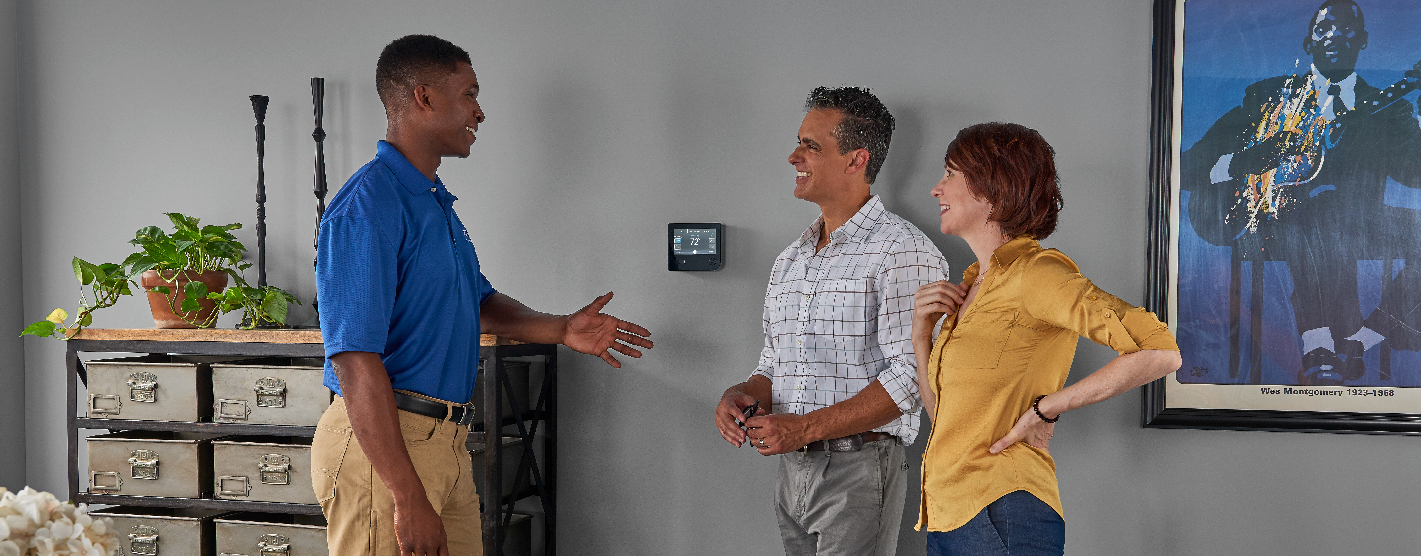SIGNS IT’S TIME TO REPLACE YOUR HEAT PUMP

Rising Energy Bills
A noticeable increase in energy bills is one of the most telling signs that your heat pump is struggling. If you pay significantly more for heating or cooling without changing your usage habits, it may be a sign that your heat pump needs to improve efficiency. Aging systems often require more energy to maintain the same level of comfort, which can lead to skyrocketing costs.
Inconsistent Temperatures
If certain rooms in your home are too hot or cold, your heat pump may need to be fixed. Inconsistent temperatures can indicate that the system is failing to distribute air evenly or that specific components are malfunctioning. If you notice this inconsistency frequently, it may be time to consider a replacement.
Frequent Repairs
Are you calling your HVAC technician more often than you’d like? It could be a red flag if you find yourself scheduling frequent repairs. While occasional maintenance is regular, a heat pump that needs constant attention may be nearing the end of its life. Consider ongoing maintenance costs versus investment in a new, more reliable system.
Age Matters
Heat pumps typically last between 10 to 15 years. If your unit is approaching or exceeding this age range, it’s wise to start considering replacement options. Older systems are often less efficient and may not meet current energy standards, making them more expensive to run in the long term.
Unusual Noises or Excessive Vibration
Unusual noises or excessive vibrations are not something to ignore if your heat pump is making strange noises—such as grinding, rattling, or squeaking. These sounds could indicate that internal components are wearing out or failing. Additionally, excessive vibration can signal that parts are misaligned or damaged. Both issues warrant a closer inspection.
System Short Cycling or Running Constantly
A heat pump that frequently turns on and off (short-cycling) or runs continuously may indicate a more significant problem. Short cycling can cause unnecessary wear and tear, while a system that runs constantly may be unable to reach the desired temperature. Both scenarios can lead to increased energy consumption and reduced comfort levels.
Poor Indoor Air Quality and Humidity Control
Finally, if you’re noticing an increase in dust, allergens, or humidity in your home, your heat pump may not adequately filter the air or manage moisture levels. Poor indoor air quality can lead to health issues and discomfort. Upgrading to a newer model can provide better filtration and humidity control, enhancing your home’s overall air quality.
TOP TIPS FOR HEAT PUMP REPLACEMENT
1. Choose local HVAC experts with a good reputation in your community.
Instead of choosing a contractor based on flashy ads or big discounts, prioritize a local, medium-sized company with a proven reputation in your community. Local companies often provide more personalized service and are vested in maintaining their reputation within the community. This means they are more likely to offer honest advice and reliable service.
2. Explore energy efficiency incentives and rebates.
Many high-efficiency heat pumps qualify for federal, state, or local rebates, as well as utility company incentives. Research available programs before your purchase, as these rebates can significantly offset upfront costs. A reputable HVAC professional can also help you navigate these options to maximize your savings.
3. Get a proper assessment of your cooling needs.
Your home’s specific features—such as its size, level of insulation, window locations, and existing ductwork—should guide the selection of your heat pump system. A home comfort specialist will conduct a comprehensive inspection to identify any particular issues affecting comfort, ensuring that your new system is both efficient and effective.
Your HVAC company should offer a Manual J load calculation to precisely determine your home’s heating and cooling requirements. This calculation takes into account factors like square footage, insulation quality, and local climate conditions, ensuring your new system is appropriately sized for optimal efficiency and comfort.
4. Consider the climate compatibility of your system.
In regions with extreme temperatures, choosing a heat pump with a high Cold Climate Heat Pump rating can make a difference in comfort and efficiency. Select a unit suited to your climate, with an emphasis on seasonal performance factors like HSPF for heating and SEER for cooling.
5. Prioritize proper installation and technician expertise.
A quality heat pump installation is crucial to its efficiency and lifespan. Opt for an HVAC company whose technicians are certified by recognized organizations like NATE (North American Technician Excellence) to ensure the job is done to industry standards. An expert installation reduces the chances of early system failure and maximizes energy efficiency from the outset.
WHAT YOU NEED TO KNOW ABOUT ENERGY RATINGS

When considering a heat pump for your home, it’s essential to understand various ratings that indicate the system’s performance, efficiency, and suitability for your specific needs. Below is a brief explanation of some common energy ratings.
SEER (Seasonal Energy Efficiency Ratio)
- Purpose: Measures the cooling efficiency of heat pumps over a typical cooling season.
- Explanation: SEER is calculated by dividing the total cooling output (in BTUs) by the total electric energy input (in watt-hours) during the same period.
- Importance: Higher SEER ratings indicate more efficient units, leading to lower energy bills during the cooling season.
- Typical Range: Modern heat pumps usually have SEER ratings between 13 and 26.
HSPF (Heating Seasonal Performance Factor)
- Purpose: Measures the heating efficiency of heat pumps over a typical heating season.
- Explanation: HSPF is calculated by dividing the total heating output (in BTUs) by the total electric energy input (in watt-hours) during the heating season.
- Importance: Higher HSPF ratings mean the heat pump is more efficient in heating, resulting in lower heating costs.
- Typical Range: Modern heat pumps have HSPF ratings between 7.7 and 13.
EER (Energy Efficiency Ratio)
- Purpose: Measures the efficiency of the heat pump at peak cooling conditions.
- Explanation: EER is calculated by dividing the cooling output (in BTUs) by the energy input (in watt-hours) under specific conditions.
- Importance: EER provides an indication of efficiency during the hottest days, which is particularly useful in regions with extreme temperatures.
- Typical Range: Modern heat pumps have EER ratings between 8 and 15.
COP (Coefficient of Performance)
- Purpose: Measures the efficiency of the heat pump in both heating and cooling modes.
- Explanation: COP is the ratio of useful heating or cooling provided to the work required. Higher COP values indicate greater efficiency.
- Importance: COP is particularly useful for understanding the heat pump’s performance in varying conditions.
- Typical Range: COP values typically range from 3 to 5.
Decibel Rating
- Purpose: Measures the noise level of the heat pump.
- Explanation: The decibel (dB) rating indicates how loud the heat pump will be during operation.
- Importance: Lower decibel ratings mean quieter operation, which can be important for indoor and outdoor comfort.
- Typical Range: Most modern heat pumps have decibel ratings between 50 and 70 dB.
ENERGY STAR ® Certification
- Purpose: Indicates that the heat pump meets strict energy efficiency guidelines set by the U.S. Environmental Protection Agency (EPA).
- Explanation: ENERGY STAR-certified heat pumps are more efficient than standard models and can save homeowners on energy costs.
- Importance: Choosing an ENERGY STAR-certified model ensures you are getting a highly efficient system.
- Typical Criteria: SEER rating of 15 or higher, HSPF rating of 8.5 or higher.
Cold Climate Heat Pump Rating
- Purpose: Measures the heat pump’s efficiency and capacity to provide heating in colder climates.
- Explanation: This rating is essential for regions with harsh winters, as it indicates the heat pump’s ability to operate efficiently at low temperatures.
- Importance: Ensures that the heat pump will perform well even during very cold weather.
- Typical Criteria: Look for heat pumps specifically designed for cold climates with higher HSPF and COP ratings at low temperatures.
AHRI Certification
- Purpose: Indicates that the heat pump’s performance has been independently tested and verified by the Air-Conditioning, Heating, and Refrigeration Institute (AHRI).
- Explanation: AHRI certification provides assurance that the heat pump will perform as advertised.
- Importance: Ensures reliability and performance consistency.
- Typical Criteria: SEER, HSPF, and EER ratings verified by AHRI.
THE HEAT PUMP INSTALLATION PROCESS

Installing a new heat pump involves several critical steps to ensure proper operation, efficiency, and longevity.
1. Removing the Old Unit
If replacing an existing system, our technician will begin by safely disconnecting and removing the old units. This process includes turning off the power supply to ensure safety. The technician will carefully disconnect the electrical connections, refrigerant lines, and any ductwork connections. The old refrigerant is safely recovered in compliance with environmental regulations. Special care is taken to avoid any damage or leaks during the disconnection process, ensuring a clean and safe removal of the old units.
2. Preparing the Installation Site
The installation site is prepared to accommodate the new system. Inspecting and possibly upgrading the existing ductwork to ensure it is compatible and efficient for the new system. We may place a new concrete pad if needed to provide a stable base for the outdoor unit, ensuring it is level and secure.
3. Installing the New System
Several steps are involved in installing the new heat pump. The new outdoor condenser unit is carefully positioned on the prepared pad, ensuring it has proper clearance for airflow and maintenance access. The indoor air handler or evaporator coil is installed within the designated space, ensuring compatibility with the existing ductwork. The technician will then connect the refrigerant lines between the indoor and outdoor units and secure all electrical wiring to power the system and enable communication between components. All connections are thoroughly checked to confirm they are secure and meet safety standards.
4. Setting Up the Thermostat
Our technician will install and program a new thermostat if needed, ensuring it is compatible with the new heat pump system and configured for optimal performance. This setup ensures the system operates efficiently and meets your comfort needs.
5. System Testing and Calibration
After the installation, we perform a series of tests to ensure the heat pump operates correctly. This includes checking all electrical connections to confirm they are secure and functioning properly. The refrigerant lines are inspected for leaks, and the system is charged with the appropriate amount of refrigerant. The system is then calibrated to ensure the thermostat and controls are accurately set for optimal performance. Airflow is tested to confirm it meets the recommended levels for efficient heating and cooling. Finally, the technician will run the heat pump through a complete cycle to verify it heats and cools the home effectively and responds correctly to thermostat adjustments.
